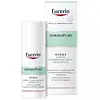What's inside
What's inside
 Key Ingredients
Key Ingredients

 Benefits
Benefits

 Concerns
Concerns

 Ingredients Side-by-side
Ingredients Side-by-side

Water
Skin ConditioningGlycerin
HumectantPanthenol
Skin ConditioningIsopropyl Palmitate
EmollientSqualane
EmollientTapioca Starch
Glyceryl Stearate Citrate
EmollientBehenyl Alcohol
EmollientCetyl Alcohol
EmollientHydrogenated Coco-Glycerides
EmollientGlycyrrhiza Inflata Root Extract
Skin ConditioningCeramide 3
Skin Conditioning4-T-Butylcyclohexanol
MaskingDimethicone
EmollientPentylene Glycol
Skin ConditioningCarbomer
Emulsion StabilisingTrisodium EDTA
Sodium Hydroxide
BufferingPhenoxyethanol
PreservativeWater, Glycerin, Panthenol, Isopropyl Palmitate, Squalane, Tapioca Starch, Glyceryl Stearate Citrate, Behenyl Alcohol, Cetyl Alcohol, Hydrogenated Coco-Glycerides, Glycyrrhiza Inflata Root Extract, Ceramide 3, 4-T-Butylcyclohexanol, Dimethicone, Pentylene Glycol, Carbomer, Trisodium EDTA, Sodium Hydroxide, Phenoxyethanol
Water
Skin ConditioningMethyl Methacrylate Crosspolymer
Dipropylene Glycol
HumectantCyclopentasiloxane
EmollientCyclohexasiloxane
EmollientDimethicone
EmollientGlycerin
HumectantButylene Glycol
HumectantFomes Officinalis Extract
Skin ProtectingSodium Polyacrylate
AbsorbentParaffinum Liquidum
EmollientSilica
AbrasivePentylene Glycol
Skin ConditioningTrideceth-6
Emulsifying1,2-Hexanediol
Skin ConditioningC30-45 Alkyl Cetearyl Dimethicone Crosspolymer
EmollientCaprylyl Glycol
EmollientLauryl PEG/PPG-18/18 Methicone
Skin ConditioningDisodium EDTA
Salicylic Acid
MaskingXylitol
HumectantPropylene Glycol
HumectantSodium Hydroxide
BufferingPEG/PPG-18/18 Dimethicone
EmulsifyingFructooligosaccharides
HumectantMannitol
HumectantCaprylic/Capric Triglyceride
MaskingGinkgo Biloba Leaf Extract
Skin ConditioningDodecyl Gallate
AntioxidantRhamnose
HumectantLaminaria Ochroleuca Extract
Skin ConditioningCitric Acid
BufferingParfum
MaskingWater, Methyl Methacrylate Crosspolymer, Dipropylene Glycol, Cyclopentasiloxane, Cyclohexasiloxane, Dimethicone, Glycerin, Butylene Glycol, Fomes Officinalis Extract, Sodium Polyacrylate, Paraffinum Liquidum, Silica, Pentylene Glycol, Trideceth-6, 1,2-Hexanediol, C30-45 Alkyl Cetearyl Dimethicone Crosspolymer, Caprylyl Glycol, Lauryl PEG/PPG-18/18 Methicone, Disodium EDTA, Salicylic Acid, Xylitol, Propylene Glycol, Sodium Hydroxide, PEG/PPG-18/18 Dimethicone, Fructooligosaccharides, Mannitol, Caprylic/Capric Triglyceride, Ginkgo Biloba Leaf Extract, Dodecyl Gallate, Rhamnose, Laminaria Ochroleuca Extract, Citric Acid, Parfum
 Reviews
Reviews

Ingredients Explained
These ingredients are found in both products.
Ingredients higher up in an ingredient list are typically present in a larger amount.
Dimethicone is a type of synthetic silicone created from natural materials such as quartz.
What it does:
Dimethicone comes in different viscosities:
Depending on the viscosity, dimethicone has different properties.
Ingredients lists don't always show which type is used, so we recommend reaching out to the brand if you have questions about the viscosity.
This ingredient is unlikely to cause irritation because it does not get absorbed into skin. However, people with silicone allergies should be careful about using this ingredient.
Note: Dimethicone may contribute to pilling. This is because it is not oil or water soluble, so pilling may occur when layered with products. When mixed with heavy oils in a formula, the outcome is also quite greasy.
Learn more about DimethiconeGlycerin is already naturally found in your skin. It helps moisturize and protect your skin.
A study from 2016 found glycerin to be more effective as a humectant than AHAs and hyaluronic acid.
As a humectant, it helps the skin stay hydrated by pulling moisture to your skin. The low molecular weight of glycerin allows it to pull moisture into the deeper layers of your skin.
Hydrated skin improves your skin barrier; Your skin barrier helps protect against irritants and bacteria.
Glycerin has also been found to have antimicrobial and antiviral properties. Due to these properties, glycerin is often used in wound and burn treatments.
In cosmetics, glycerin is usually derived from plants such as soybean or palm. However, it can also be sourced from animals, such as tallow or animal fat.
This ingredient is organic, colorless, odorless, and non-toxic.
Glycerin is the name for this ingredient in American English. British English uses Glycerol/Glycerine.
Learn more about GlycerinPentylene glycol is typically used within a product to thicken it. It also adds a smooth, soft, and moisturizing feel to the product. It is naturally found in plants such as sugar beets.
The hydrophilic trait of Pentylene Glycol makes it a humectant. As a humectant, Pentylene Glycol helps draw moisture from the air to your skin. This can help keep your skin hydrated.
This property also makes Pentylene Glycol a great texture enhancer. It can also help thicken or stabilize a product.
Pentylene Glycol also acts as a mild preservative and helps to keep a product microbe-free.
Some people may experience mild eye and skin irritation from Pentylene Glycol. We always recommend speaking with a professional about using this ingredient in your routine.
Pentylene Glycol has a low molecular weight and is part of the 1,2-glycol family.
Learn more about Pentylene GlycolSodium Hydroxide is also known as lye or caustic soda. It is used to adjust the pH of products; many ingredients require a specific pH to be effective.
In small amounts, sodium hydroxide is considered safe to use. However, large amounts may cause chemical burns due to its high alkaline.
Your skin has a natural pH and acid mantle. This acid mantle helps prevent harmful bacteria from breaking through. The acid mantle also helps keep your skin hydrated.
"Alkaline" refers to a high pH level. A low pH level would be considered acidic.
Learn more about Sodium HydroxideWater. It's the most common cosmetic ingredient of all. You'll usually see it at the top of ingredient lists, meaning that it makes up the largest part of the product.
So why is it so popular? Water most often acts as a solvent - this means that it helps dissolve other ingredients into the formulation.
You'll also recognize water as that liquid we all need to stay alive. If you see this, drink a glass of water. Stay hydrated!
Learn more about Water